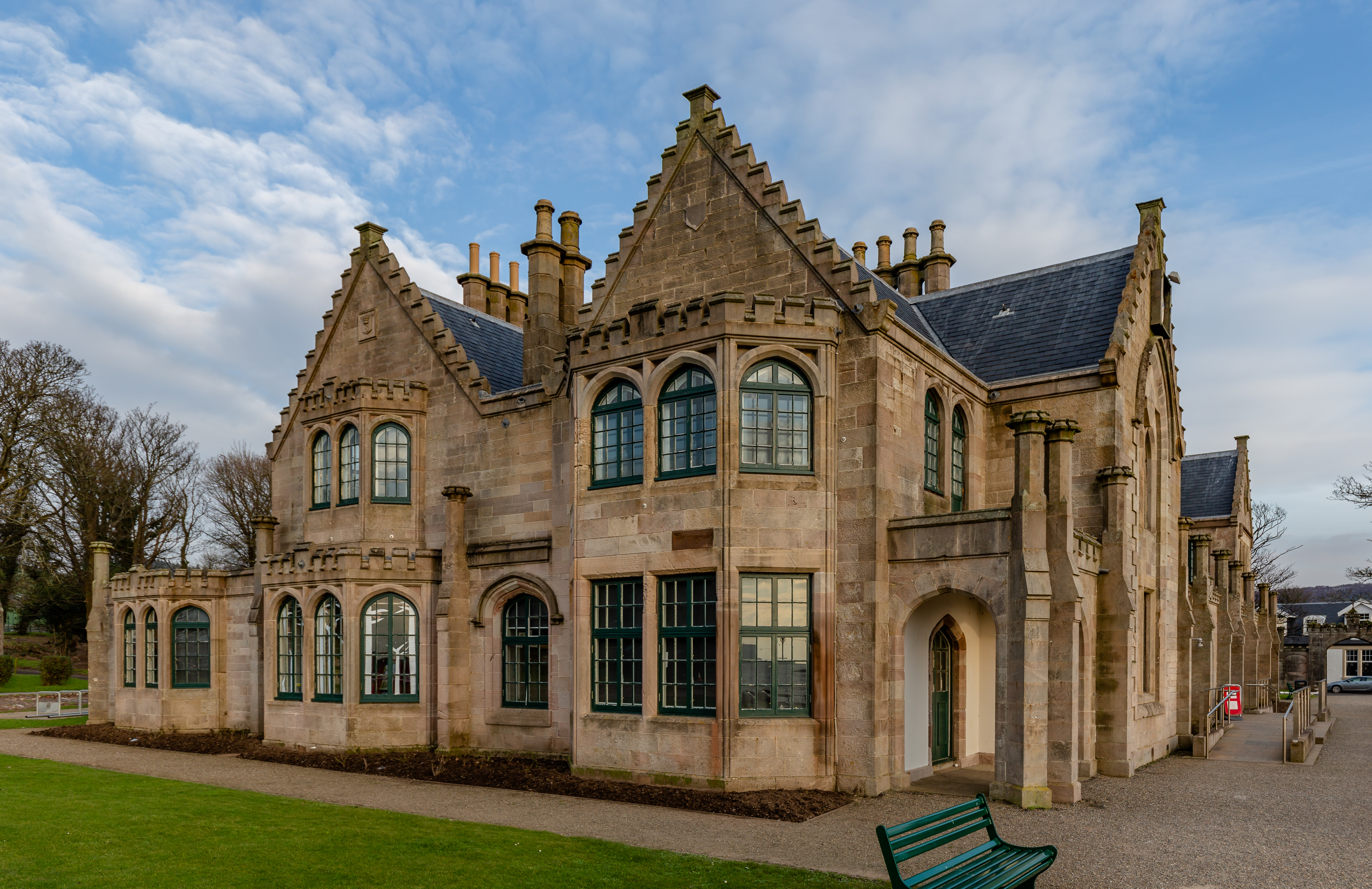|
George Boyle, 6th Earl Of Glasgow
George Frederick Boyle, 6th Earl of Glasgow (9 October 1825 – 23 April 1890), was a Scottish nobleman. He was the son of George Boyle, 4th Earl of Glasgow, and Julia Sinclair, daughter of Sir John Sinclair, 1st Baronet. In February 1847, Boyle traveled with Frederick Hamilton-Temple-Blackwood, 1st Marquess of Dufferin and Ava, to Skibbereen in County Cork to try and aid victims of the Irish Famine. Lord Dufferin left a memoir of their journey entitled '' Narrative of a Journey from Oxford to Skibbereen during the Year of the Irish Famine'' published in 1847 (27 pages). He married Hon. Montague Abercromby (1835–1931), daughter of George Abercromby, 3rd Baron Abercromby, and Louisa Penuel Forbes, on 29 April 1856. They had two daughters *Lady Gertrude Julia Georgina Boyle (15 November 1861 – 12 December 1950); married Thomas Cochrane, 1st Baron Cochrane of Cults, had eight children. *Lady Muriel Louisa Diana Boyle (18 November 1872 – 3 April 1915); died unmarried He was ... [...More Info...] [...Related Items...] OR: [Wikipedia] [Google] [Baidu] |
The Right Honourable
''The Right Honourable'' ( abbreviation: ''Rt Hon.'' or variations) is an honorific style traditionally applied to certain persons and collective bodies in the United Kingdom, the former British Empire and the Commonwealth of Nations. The term is predominantly used today as a style associated with the holding of certain senior public offices in the United Kingdom, Canada, New Zealand, and to a lesser extent, Australia. ''Right'' in this context is an adverb meaning 'very' or 'fully'. Grammatically, ''The Right Honourable'' is an adjectival phrase which gives information about a person. As such, it is not considered correct to apply it in direct address, nor to use it on its own as a title in place of a name; but rather it is used in the third person along with a name or noun to be modified. ''Right'' may be abbreviated to ''Rt'', and ''Honourable'' to ''Hon.'', or both. ''The'' is sometimes dropped in written abbreviated form, but is always pronounced. Countries with common or ... [...More Info...] [...Related Items...] OR: [Wikipedia] [Google] [Baidu] |
James Lamont (explorer)
Sir James Lamont, 1st Baronet (26 April 1828 – 29 July 1913) was a Scottish explorer, particularly known for his travels in the Arctic; he also travelled to Africa and the West Indies. He was a fellow of the Geological Society of London and the Royal Geographical Society.Jones, AGELamont, Sir James, first baronet (1828–1913)''Oxford Dictionary of National Biography'', Oxford University Press, 2004Darwin Correspondence Project: James Lamont, 1828–1913 (accessed 25 November 2009) Lamont Island in the archipelago of |
David Mure, Lord Mure
David Mure (11 October 1810 – 11 April 1891) was a Scottish lawyer and Conservative Party politician. He sat in the House of Commons from 1859 to 1865, when he became a judge. Early life He was the third son of William Mure of Caldwell, Rector of the University of Glasgow 1793–1795; grandson of William Mure, MP for Renfrewshire 1742-1761 and Rector of Glasgow 1764–1765; younger brother of William Mure, MP for Renfrewshire 1846-1855 and Rector of Glasgow 1847–1848, and uncle of William Mure, MP for Renfrewshire 1874–1880. Career He was appointed Solicitor General for Scotland in 1858 and Lord Advocate in 1859. He elected at the 1859 general election as the Member of Parliament (MP) for Buteshire, and held the seat until January 1865, when he was appointed as a Senator of the College of Justice and with the judicial title Lord Mure. Personal life He was married to Helen Clementina Tod (d.1849) and together they had William John Mure (1845-1924). They lived at 8 ... [...More Info...] [...Related Items...] OR: [Wikipedia] [Google] [Baidu] |
University Of Durham
Durham University (legally the University of Durham) is a collegiate university, collegiate public university, public research university in Durham, England, Durham, England, founded by an Act of Parliament in 1832 and incorporated by royal charter in 1837. It was the first recognised university to open in England for more than 600 years, after University of Oxford, Oxford and University of Cambridge, Cambridge, and is thus one of the institutions to be described as the third-oldest university in England debate, third-oldest university in England. As a collegiate university its main functions are divided between the academic departments of the university and its Colleges of Durham University, 17 colleges. In general, the departments perform research and provide teaching to students, while the colleges are responsible for their domestic arrangements and welfare. The university is a member of the Russell Group of British research universities after previously being a member of the 19 ... [...More Info...] [...Related Items...] OR: [Wikipedia] [Google] [Baidu] |
Cumbrae
Great Cumbrae ( sco, Muckle Cumbrae; gd, Cumaradh Mòr; also known as Great Cumbrae Island, Cumbrae or the Isle of Cumbrae) is the larger of the two islands known as The Cumbraes in the lower Firth of Clyde in western Scotland. The island is sometimes called Millport, after its main town. Home to the Cathedral of The Isles and the FSC Millport field study centre, the island has a thriving community of 1,300 residents. Geography The island is roughly long by wide, rising to a height of above sea level at The Glaid Stone, which is a large, naturally occurring rock perched on the highest summit on the island. There is a triangulation pillar nearby, as well as an orientation point which indicates the locations of surrounding landmarks. In clear conditions, views extend north over the upper Clyde estuary to Ben Lomond and the Arrochar Alps. To the west, the larger islands of Bute and Arran can be seen, while on the other side of Knapdale the Paps of Jura may be visible. Loo ... [...More Info...] [...Related Items...] OR: [Wikipedia] [Google] [Baidu] |
Millport, Cumbrae
Millport (Scottish Gaelic: Port a' Mhuilinn) is the only town on the island of Great Cumbrae in the Firth of Clyde off the coast of mainland Britain, in the council area of North Ayrshire. The town is south of the ferry terminal that links the island to the Scottish mainland. Due to its small size, the island and its town are often linked in the minds of visitors and residents and Cumbrae is often referred to as Millport. The island offers views across to the Isle of Arran as well as of its smaller neighbour which lies barely a kilometre away, called Little Cumbrae. The Cumbraes are referred to as the ''Kumreyiar'' in the medieval Norse '' Saga of Haakon Haakonarson''. Etymology The Gaelic name ''Cumaradh'' means "place of the Cymric people", referring to the Brittonic-speaking inhabitants of the Kingdom of Strathclyde. Alternatively, the name Cumbrae may derive from ''Kil Maura'' meaning "cell or church of a female saint". History The Garrison House in the centre of town, ... [...More Info...] [...Related Items...] OR: [Wikipedia] [Google] [Baidu] |
University Of Dundee
The University of Dundee; . Abbreviated as ''Dund.'' for post-nominals. is a public university, public research university based in Dundee, Scotland. It was founded as a University college#United Kingdom, university college in 1881 with a donation from the prominent Baxter family of History of Dundee#Industrial revolution, textile manufacturers. The institution was, for most of its early existence, a Collegiate university, constituent college of the University of St Andrews alongside United College, St Andrews, United College and St Mary's College, St Andrews, St Mary's College located in the town of St Andrews itself. Following significant expansion, the University of Dundee gained independent university status by royal charter in 1967 while retaining elements of its ancient university, ancient heritage and ancient university governance in Scotland, governance structure. The main campus of the university is located in Dundee's West End, Dundee, West End, which contains many of the ... [...More Info...] [...Related Items...] OR: [Wikipedia] [Google] [Baidu] |
Alexander Forbes (bishop Of Brechin)
Alexander Penrose Forbes (16 June 18178 October 1875) was a Scottish Episcopalian divine, born in Edinburgh. A leading cleric in the Scottish Episcopal Church, he was Bishop of Brechin from 1847 until his death in 1875. Biography He was the second son of John Hay Forbes, Lord Medwyn, a judge of the court of session, and grandson of Sir William Forbes, 6th Baronet of Pitsligo. He studied first at the Edinburgh Academy, then for two years under the Rev. Thomas Dale the poet, in Kent, passed one session at Glasgow University in 1831 and, having chosen the career of the Indian Civil Service, completed his studies with distinction at the East India Company College. In 1836 he went to Madras and secured early promotion, but in consequence of ill health he was obliged to return to England. In 1840, he entered Brasenose College, Oxford, where in 1841 he obtained the Boden Sanskrit scholarship. He graduated with a B.A. in 1844. He was at Oxford during the early years of the movement ... [...More Info...] [...Related Items...] OR: [Wikipedia] [Google] [Baidu] |
Scottish Episcopal Church
The Scottish Episcopal Church ( gd, Eaglais Easbaigeach na h-Alba; sco, Scots Episcopal(ian) Kirk) is the ecclesiastical province of the Anglican Communion in Scotland. A continuation of the Church of Scotland as intended by King James VI, and as it was from the Restoration of King Charles II to the re-establishment of Presbyterianism in Scotland following the Glorious Revolution, it recognises the archbishop of Canterbury as president of the Anglican Instruments of Communion, but without jurisdiction in Scotland ''per se''. This close relationship results from the unique history of the Scottish Episcopal Church. Scotland's third largest church, the Scottish Episcopal Church has 303 local congregations. In terms of official membership, Episcopalians today constitute well under 1 per cent of the population of Scotland, making them considerably smaller than the Church of Scotland. The membership of the church in 2019 was 27,585, of whom 19,784 were communicant members. Weekly att ... [...More Info...] [...Related Items...] OR: [Wikipedia] [Google] [Baidu] |
Baron Ross
Baron is a rank of nobility or title of honour, often hereditary, in various European countries, either current or historical. The female equivalent is baroness. Typically, the title denotes an aristocrat who ranks higher than a lord or knight, but lower than a viscount or count. Often, barons hold their fief – their lands and income – directly from the monarch. Barons are less often the vassals of other nobles. In many kingdoms, they were entitled to wear a smaller form of a crown called a ''coronet''. The term originates from the Latin term , via Old French. The use of the title ''baron'' came to England via the Norman Conquest of 1066, then the Normans brought the title to Scotland and Italy. It later spread to Scandinavia and Slavic lands. Etymology The word ''baron'' comes from the Old French , from a Late Latin "man; servant, soldier, mercenary" (so used in Salic law; Alemannic law has in the same sense). The scholar Isidore of Seville in the 7th century thoug ... [...More Info...] [...Related Items...] OR: [Wikipedia] [Google] [Baidu] |
_(cropped).jpg)





